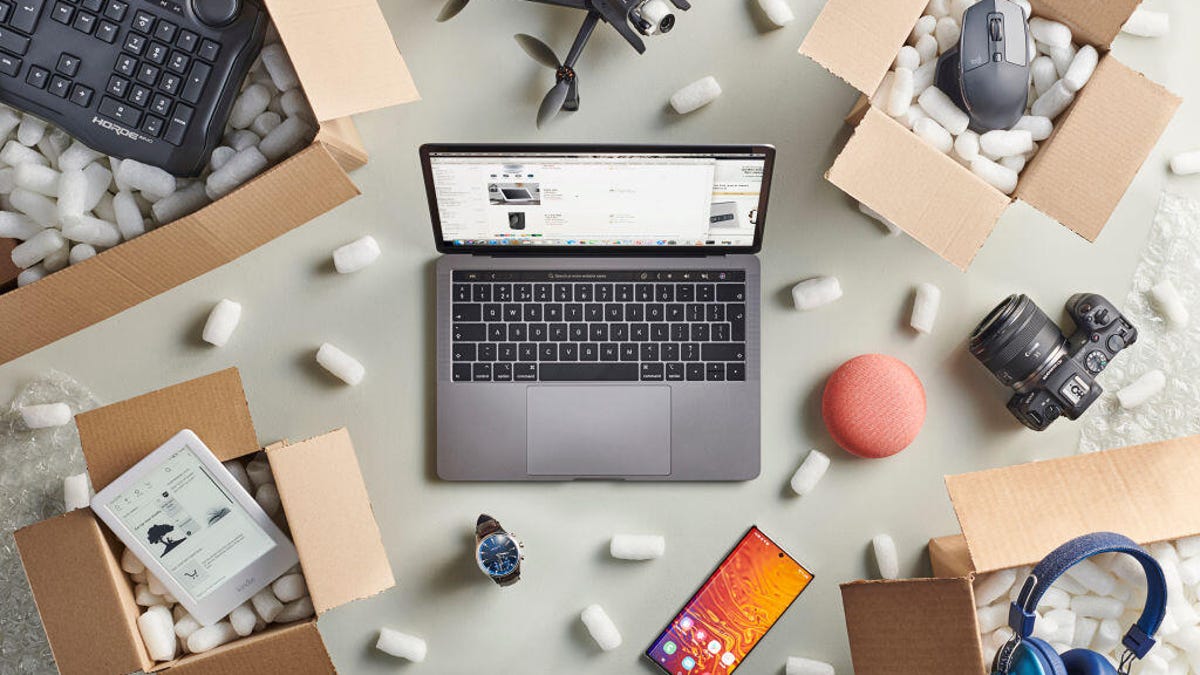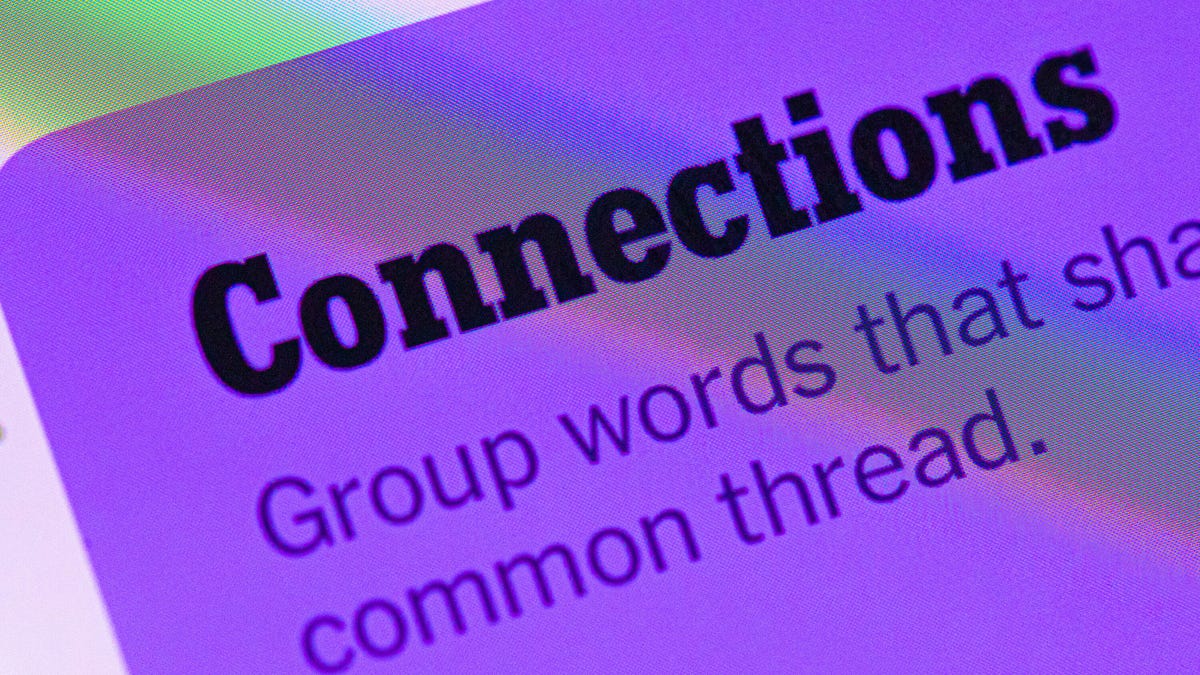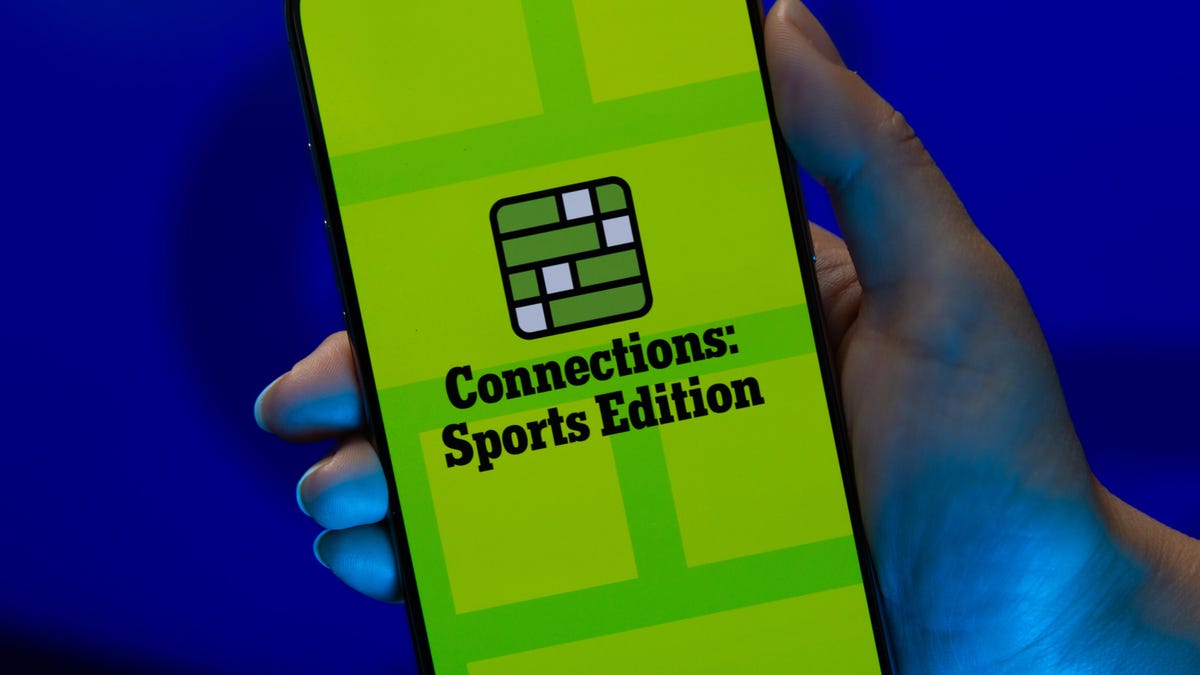Technologies
Tariffs Are Raising Prices. Here’s How You Can Still Save On Tech
Higher prices don’t mean fewer options. Here’s how you can save on high-end electronics, despite the tariffs.

Over the past month, the global electronics market has experienced significant upheaval, and it’s probably only going to get worse. The Trump administration’s sweeping tariffs — up to 145% on Chinese imports — have disrupted supply chains and driven up prices on a wide array of consumer electronics.
Even with exemptions for smartphones and laptops, the threat of additional levies has led to price hikes across the board, from power banks and e-readers to toasters, microwaves and gaming consoles.
While the new Switch 2 won’t be affected by the tariffs (for now), several of the new Nintendo console’s accessories, like the Pro and Joy-Con controllers, have already increased in price because of the tariffs. Anker has raised prices for many of its power banks. The tariffs will likely also increase the price of iPhones.
Read more: Buy or Wait Guide: How Tariffs Will Change Tech Prices and What to Do Now
Amid this economic turbulence, consumers are increasingly turning to refurbished tech as a cost-effective alternative to buying brand new. This sector is not only growing rapidly, it’s also becoming a mainstream choice for savvy shoppers looking to save. The global refurbished electronics market is expected to grow from $47 billion in 2023 to over $123 billion by 2033, according to one report.
If you’re in the market for a new phone, new laptop or any other tech product, you’re better off buying used than new right now. For folks looking to navigate this burgeoning market, there are several reputable platforms that offer high-quality refurbished electronics.
Where you can shop for refurbished tech
Not everyone wants to buy used products, especially when there are risks. A used electronic item might look fine from the outside, but there’s always the chance of hidden hardware issues, like a degraded battery or water damage. Plus, there are rarely ever warranties or return policies on used items. Not to mention, the products could be stolen.
So that’s why you want to buy refurbished, not just used. The difference is that a refurbished item is usually sold by a manufacturer, retailer or certified refurbisher and is inspected, tested, repaired and restored to full working condition. This isn’t like buying a used computer from someone on Facebook Marketplace. Instead, you get a cleaned and repackaged product with a warranty, just like a new product. If you want the assurances of a refurbished item, there are many options.
Apple Certified Refurbished
Apple’s in-house refurbishment program is widely considered the gold standard. Every device — whether it’s a MacBook, an iPhone, an iPad or even an Apple Vision Pro — comes with a new battery and outer shell, so cosmetically it’s indistinguishable from new. All products are rigorously tested, cleaned and repackaged in an official Apple box, along with cables and other accessories. You’ll also get a one-year limited warranty and the option to add AppleCare Plus, making this one of the safest ways to buy refurbished Apple gear.
Amazon Renewed Store
Amazon’s refurbished technology storefront offers a pretty sizable catalog with everything from smartphones and laptops to home appliances, headphones and even electric toothbrushes. All these devices are inspected and tested by qualified suppliers to meet certain performance benchmarks. Most products come with a minimum 90-day Amazon Renewed Guarantee, which allows you to return or replace the product if it doesn’t work as promised.
Best Buy Outlet
Best Buy’s certified refurbished store includes TVs, tablets, laptops, smartphones, kitchen gadgets, gaming gear and more. Many items are Geek Squad Certified, meaning they’ve been restored and tested by its in-house technicians. And if you’re more about an in-person experience, Best Buy offers local pickup for many of these refurbished items, along with standard warranties that vary by product.
eBay Refurbished
eBay may seem like the Wild West at times, but the company partners with certified refurbishers and brands like Samsung, Lenovo and Dell to offer items with up to 50% off retail pricing. You can also check out product grading, which varies from good to excellent, and you’ll receive a one- or two-year warranty, as well as 30-day returns.
Swappa
Swappa is a peer-to-peer marketplace, but with guardrails. Sellers can only list fully functional devices, and every item is manually reviewed before it goes live on the website. All you need to do is find your product and then check out the price, condition and age, and you can buy directly from the seller. All transactions are protected via PayPal, which can help you in case a purchase never shows up or you’re unhappy with a product and need a refund.
As tariffs continue to influence the tech industry, the refurbished market stands out as a great alternative for you to get the tech products you want at an affordable price and without compromising on quality. If you use any of these trusted platforms, you can mitigate the financial impact of tariffs and rising electronics prices, and also participate in more-sustainable consumption practices.
You can try secondhand but there are risks
A refurbished tech product might still be expensive. Enter the raw, unfiltered secondhand market: Facebook Marketplace, OfferUp, Craigslist and Nextdoor, to name just a few. These platforms are less about guarantees and more about opportunity. You can be smart and patient and scoop up a MacBook from a college student upgrading midsemester, or grab a highly discounted PS5 from someone cleaning house before a cross-country move. But there are trade-offs. No warranty. No refurbishment. No assurance it wasn’t dropped in a pool or «borrowed» indefinitely. You can still get some unbeatable prices with the right negotiation tactics.
These platforms are seeing increased tech activity, with anecdotal spikes in metro-area listings for iPads, AirPods and OLED TVs since tariff announcements started to dominate headlines. Some sellers are flipping open-box returns or reselling their own gear to upgrade in anticipation of price surges, which effectively creates a grassroots resale economy shaped by the current trade policy. Before you venture into the secondhand market, there are a few tips you should follow.
- Meet in a public place and always test the item before handing over payment. You may want to handle the transaction quickly, but it’s best to ensure the item is in good condition. And doing it in public protects you (a bit) from getting ripped off.
- Check battery health on phones and laptops. You can do this in the settings of the devices.
- Verify serial numbers when possible to check warranty or theft status. There are websites that quickly allow you to use the IMEI of a phone to check whether it’s stolen. (IMEI stands for international mobile equipment identity, a 15-digit unique ID number.)
- Use payment apps like Venmo or PayPal Goods & Services for added protection. Cash is great, because you can typically get a better discount, but you have to ensure that the product you’re buying is in good condition.
We don’t have the full picture of how tariffs will affect all the tech products in our lives, but as new devices become less affordable amid general economic uncertainty, buying used can be a smart choice. It doesn’t matter if it’s a refurbished iPad from Amazon or a gently used Nintendo Switch from OfferUp, sometimes pricing matters so much more than packaging. With the trade war showing no signs of cooling, the secondhand and refurbished tech ecosystem isn’t just a reaction. It’s a quiet rebellion we can all have a hand in.
Technologies
Today’s NYT Connections Hints, Answers and Help for Nov. 15, #888
Here are some hints — and the answers — for the NYT Connections puzzle for Nov. 15, #888.

Looking for the most recent Connections answers? Click here for today’s Connections hints, as well as our daily answers and hints for The New York Times Mini Crossword, Wordle, Connections: Sports Edition and Strands puzzles.
Today’s NYT Connections puzzle includes some tricky words. If you need help sorting them into groups, you’re in the right place. Read on for clues and today’s Connections answers.
The Times now has a Connections Bot, like the one for Wordle. Go there after you play to receive a numeric score and to have the program analyze your answers. Players who are registered with the Times Games section can now nerd out by following their progress, including the number of puzzles completed, win rate, number of times they nabbed a perfect score and their win streak.
Read more: Hints, Tips and Strategies to Help You Win at NYT Connections Every Time
Hints for today’s Connections groups
Here are four hints for the groupings in today’s Connections puzzle, ranked from the easiest yellow group to the tough (and sometimes bizarre) purple group.
Yellow group hint: Yum!
Green group hint: Grammar time.
Blue group hint: They win Oscars and Tonys.
Purple group hint: Think DMZ.
Answers for today’s Connections groups
Yellow group: Enhance the taste of.
Green group: Punctuation marks.
Blue group: Kinds of actors.
Purple group: ____ zone.
Read more: Wordle Cheat Sheet: Here Are the Most Popular Letters Used in English Words
What are today’s Connections answers?
The yellow words in today’s Connections
The theme is enhance the taste of. The four answers are flavor, salt, season and spice.
The green words in today’s Connections
The theme is punctuation marks. The four answers are colon, dash, period and slash.
The blue words in today’s Connections
The theme is kinds of actors. The four answers are character, film, method and stage.
The purple words in today’s Connections
The theme is ____ zone. The four answers are buffer, comfort, time and twilight.
Technologies
Today’s NYT Connections: Sports Edition Hints and Answers for Nov. 15, #418
Here are hints and the answers for the NYT Connections: Sports Edition puzzle No. 418 for Saturday, Nov. 15.

Looking for the most recent regular Connections answers? Click here for today’s Connections hints, as well as our daily answers and hints for The New York Times Mini Crossword, Wordle and Strands puzzles.
Today’s Connections: Sports Edition is a fun one. Not really sure what the yellow category has to do with sports, but OK, whatever. If you’re struggling but still want to solve it, read on for hints and the answers.
Connections: Sports Edition is published by The Athletic, the subscription-based sports journalism site owned by the Times. It doesn’t show up in the NYT Games app but appears in The Athletic’s own app. Or you can play it for free online.
Read more: NYT Connections: Sports Edition Puzzle Comes Out of Beta
Hints for today’s Connections: Sports Edition groups
Here are four hints for the groupings in today’s Connections: Sports Edition puzzle, ranked from the easiest yellow group to the tough (and sometimes bizarre) purple group.
Yellow group hint: Keeps your head warm.
Green group hint: Nothing but net!
Blue group hint: College signal-callers.
Purple group hint: It’s a bird! It’s a plane!
Answers for today’s Connections: Sports Edition groups
Yellow group: Headgear.
Green group: A score in basketball.
Blue group: First names of SEC QBs.
Purple group: Super ____.
Read more: Wordle Cheat Sheet: Here Are the Most Popular Letters Used in English Words
What are today’s Connections: Sports Edition answers?
The yellow words in today’s Connections
The theme is headgear. The four answers are balaclava, cap, hat and visor.
The green words in today’s Connections
The theme is a score in basketball. The four answers are basket, bucket, field goal and make.
The blue words in today’s Connections
The theme is first names of SEC QBs. The four answers are Arch, Diego, Trinidad and Ty.
The purple words in today’s Connections
The theme is super ____. The four answers are flex, Sonics, speedway and star.
Technologies
Older Pixel Phones Score a Handy New Feature: Call Recording
Google says the feature is also coming to non-Pixel phones, though the specific models are unclear.
There are some times when you need to record a phone call — whether it’s for school or for legal purposes — and Google now offers this to more Pixel users. Google is rolling out call recording to older Pixel phones, and even some non-Pixel phones which use the Google Phone app.
Both Pixel 9 and Pixel 10 phones already include the AI-powered Call Notes function to generate summaries of your conversations. According to Google, the ability to record calls is now coming to Pixel 6 devices and up.
Read more: Best Pixel Phones of 2025
Pixel users with Android 14 software or later, and the latest version of the Google Phone app, can access Call Recording settings by going to Phone > Settings > Call Recording. Users can set up the ability to always record calls, as well as record from certain numbers.
Don’t miss any of our unbiased tech content and lab-based reviews. Add CNET as a preferred Google source.
When in a call, users can press the record button at the bottom of the screen. The other party will then hear a message saying that the call will be recorded. Recordings will be kept indefinitely or you can choose to delete them after seven, 14, or 30 days.
While Google’s support page says the feature is available to non-Pixel phones with Android 9 and up, the feature does appear to be device-dependent. I attempted to use the feature on two recent Samsung Galaxy phones — one with AT&T and one on T-Mobile — and confirmed that the «Call Recording» option doesn’t appear.
A representative for Google did not immediately respond to a request for comment.
Apple iPhone users can also record calls.
-

 Technologies3 года ago
Technologies3 года agoTech Companies Need to Be Held Accountable for Security, Experts Say
-

 Technologies3 года ago
Technologies3 года agoBest Handheld Game Console in 2023
-

 Technologies3 года ago
Technologies3 года agoTighten Up Your VR Game With the Best Head Straps for Quest 2
-

 Technologies4 года ago
Technologies4 года agoBlack Friday 2021: The best deals on TVs, headphones, kitchenware, and more
-

 Technologies4 года ago
Technologies4 года agoVerum, Wickr and Threema: next generation secured messengers
-

 Technologies4 года ago
Technologies4 года agoGoogle to require vaccinations as Silicon Valley rethinks return-to-office policies
-

 Technologies4 года ago
Technologies4 года agoOlivia Harlan Dekker for Verum Messenger
-

 Technologies4 года ago
Technologies4 года agoiPhone 13 event: How to watch Apple’s big announcement tomorrow
